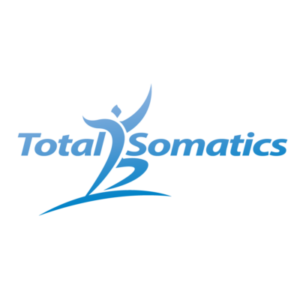The Technology Generation and Brain Development
The use of technology has mushroomed over the last 20 years. The fantastic advancements in technology has enabled us to communicate with people globally and made areas of our life so convenient. Thanks to technology you are able to stream the Total Somatics online programs (www.TotalSomatics.com) onto your computer and TV screens in the comfort of your own home.
But in other areas of our life have we allowed ourselves to become reliant on technology to the point that it may be affecting social skills and development? How has this affected our young ones?
The use of smartphones, tablets and apps are part of a child’s life nowadays. They are so savvy that many times adults need coaching on how to use their devices from the younger generation!!
According to a 2015 study by Common Sense Media, the typical American teen spends 9 hours each day or 63 hours per week on electronic devices and media, which is unrelated to school or homework. In 2016 a study was conducted with 620 teenagers. They discovered that 78% checked their devices at least once an hour. Interestingly, 72% felt they had to respond immediately to notifications or text messages. It is concerning to hear these finding because beneath the skin and in the brain something is happening from this habituated behaviour. An interesting fact I have always remembered from my Neuropsychology studies which often springs to mind when I consider these statistics is that by the age of 6 years, a child has 90% of their neural connections.

Between the age of 6 and their teenage years a process known as ‘neural pruning’ occurs. It is a very efficient and smart way for the brain to basically ‘weed out’ the neural pathways which are not used as often. This is a concern because areas of social skills and development can be lost. There can be less face to face communication and team or friendship building activities happening. This leads to poor eye contact, the art of conversation can be lost, coping skills and strategies may be absent. Plus building “solid, real” friendships rather than virtual ones can be very challenging for some.
The use and over use of technology has been shown to affect the actions of the pre-frontal cortex in teenagers which then leads to problems as they grow into their 20s. This area of the brain controls our focus, awareness, concentration, decision making, emotional intelligence and willpower. When we use technology, it has a huge effect on our cognitive growth and abilities.
This blog is certainly not designed to find fault with the younger generation because the over use of technology can have a detrimental effect on people of any age. The addictive component to technology can catch anybody out. The reward areas of our brain becomes excited when we receive a notification in the form of a text, “like” or new follower. We feel a surge in pleasure hormones such as dopamine and serotonin; it can be very additive and exciting at the same time. As a result people are becoming less mindful in their activities and more preoccupied by technology. They may be allowing themselves to become distracted by them. This affects productivity and interpersonal skills in the work force, school, university and relationships.
As a Somatics educator I encourage people to be mindful in their overall health and well being. If you follow my online programs (www.TotalSomatics.com), you will know that I discuss how we can increase our Somatic awareness to all areas of our life, including the use of digital devices. Thomas Hanna created the modality Somatics and many years ago before technology took off to the degree it is today, his comments were so true. What were his comments? Well, Thomas Hanna used and wrote about “The Myth of Ageing.” He said that it was a myth that when we age we start to develop the “old man stoop.” He said that this posture is a habituated response. If he was alive now he would see that his statement was so true. I am sure you would agree that we are seeing a younger generation with a stooped appearance developing in their late teens and early 20s. Due to habituated postures which involve looking at hand held devices, children are developing “the old man stoop.” This means they will start to develop neuromuscular problems at an earlier age than their parents if they continue with these habituated actions, movements and behaviours.
Notice how popular singers such as Justin Bieber who are only in their 20s are resembling “the old man stoop” from habitual behaviours such as sitting in a slumped pose playing and watching entertainment on their computers or hand held devices.

Is there anything we can do to reverse this after all technology is here to stay?
Yes we can develop a digital detox time each day.

Practical tips:
- Switch your phone off for 1-2 hours each day.
- Put your phone on silent as often as possible so you aren’t dictated by the phone ringing.
- Switch off notifications so they don’t distract you.
- Ban the use of technology at the dinner table.
- If we are talking to our children or others remember we are role models. Try not to keep your phone nearby when you are talking to others. It creates a subconscious message to that person that they aren’t as important as the next text or ring on your phone.
- When you are talking to someone, develop mindfulness with that conversation. Be completely absorbed in that situation and develop and deepen the connections with “real” people rather than virtual people.
- Develop and practise daily Somatic movement sequences to stop the brain holding these habituated postures. When we use more of our pre-frontal cortex, lower the actions of the Limbic system (stress centre of the brain) and ensure the reflex actions in the brainstem are not subconsciously controlling us, we can break these detrimental habits. When we become aware of the reflex actions of the brainstem and are able to identify when our subconscious mind has taken over, we can switch our mindset and use the intelligent, higher learning centres of the brain to over ride these bad habits and become more conscious of our actions.
- Deep abdominal breathing is excellent to develop for all ages to decrease the stress responses in our mind and body. But is we are prone to slumping forward or we notice our children are collapsed in at the waist/centre of their body similar to Justin Bieber’s posture in the image earlier, deep abdominal breathing is imperative. By increasing deep abdominal breathing, we help to open and lengthen tightly contracted abdominal muscles. I am sure you have heard of the “6 pack muscle.” This muscle attaches at the bottom of the breastbone and runs along the front of the abdomen and attaches to the pubic bone. When it becomes chronically contracted or tight, it pulls both ends of the muscle closer together, causing the person to stoop forward. You may often see people who do a lot of abdominal or weight training also have this rounded, stooped shoulder appearance. This is due to muscles being habitually tightened and the brain unable to switch the contracted fibres off. This results in muscles staying “switched on” and maintaining this unbalanced posture. So this principle applies to any habituated action. Just like a teenager or adult spending large amounts of time on technology, the more we repeat an action, the brain thinks this is the “new normal” and will hold muscles in this new pose. So by lying on your back, with your knees bent and feet flat on the floor, place your hands on your belly and start focusing on deep abdominal breathing. My free audios will help you to increase movement into your belly and pelvis. This in turn will help to increase movement through the abdomen and lower back, plus release chronically tight muscles through the centre of your body.
FOR MORE INFORMATION AND FREE GUIDED AUDIOS ON DEEP SOMATIC BREATHING CHECK OUT MY BLOGS:
https://totalsomatics.com/awareness-to-your-breathing/
https://totalsomatics.com/the-benefits-of-somatic-breathing
So with this increased level of awareness, let’s start increasing our mindfulness to life and reduce the controlling, mindless effects technology can have on us.
To learn practical skills and knowledge to apply in your daily activities which will help reduce pain, increase mobility, improve posture, release chronically tight muscles and switch your mindset, join my online programs at www.TotalSomatics.com.
Take care,
Heidi Hadley xx
www.TotalSomatics.com












Leave a Reply